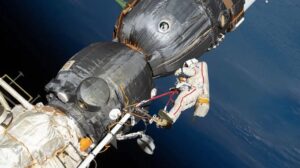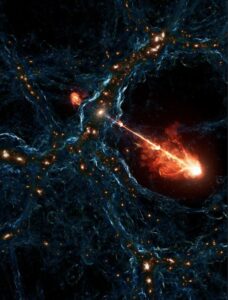It’s official: humans have taken our first step back toward the original “small step for man.”
NASA’s Artemis I mission launched from Cape Canaveral, Fla. in the early morning hours on Wednesday, sending a space capsule moonward.

NASA’s Artemis I lifts off at 1:47 a.m., Nov. 16, at Florida’s Kennedy Space Center. Photo: NASA/Bill Ingalls
According to the space agency’s plan, the uncrewed Orion spacecraft will perform an orbit around the moon and finalize the foundation for humans to return to there for the first time in 50 years.
Along the way, the Orion shot the first images from a spacecraft designed to carry humans since that 1972 mission — Apollo 17.
As @NASA_Orion begins the #Artemis I mission to the Moon, the spacecraft captured these stunning views of our home planet. pic.twitter.com/Pzk3PDt7sd
— NASA Artemis (@NASAArtemis) November 16, 2022
Orion captured the footage around nine hours into its round trip, about 91,732km away from terra firma, according to CNN.
The Artemis I system was massive: a 98m rocket (the Space Launch System or “SLS”) with the Orion capsule perched on top. When it launched at 1:47 a.m. ET, it discharged around 3.3 million kilograms of thrust to propel itself skyward.
The multi-stage rocket burned millions of pounds of fuel on its way up, then started to separate. Eventually, the Orion capsule continued on alone toward outer space — with its inanimate crew.
In an effort to gather data for the eventual crewed mission, NASA placed mannequins on board the Orion. They’ll pass within 100km of the lunar surface during the spacecraft’s close flyby, scheduled for Monday, Nov. 21. After that, it will recede into a more distant retrograde orbit around the moon on November 25.
The Orion will cover about 2 million kilometres on its planned 25.5-day round trip, which will earn it the distinction of the farthest-traveling spacecraft ever designed for humans, NASA said.
At the end of the mission, the capsule will splash down in the Pacific Ocean near San Diego on Dec. 11. After a recovery crew hauls it in, the real work begins: evaluating the mission results for the planned crewed launch in 2024.
Even that’s a drop in the bucket (or a pinpoint of starlight) in terms of NASA’s ultimate goal for the Artemis project, which is to establish a livable moon base.
Monumental challenge
Even now, in the objective’s early stages, challenges are monumental. Hurricanes lashed Florida in the weeks leading up to the launch. On launch day, safely filling the SLS rocket with its superchilled liquid hydrogen fuel represented an early obstacle. Leaks halted the procedure just hours before liftoff.
How did the show go on? In short, people had to walk up to the loaded rocket and fix the leaks. NASA calls the maintenance professionals it trains specifically to work on fueled rockets “red crews”.
“The rocket, it’s alive, it’s creaking, its making venting noises — it’s pretty scary. So…my heart was pumping. My nerves were going but, yeah, we showed up today. When we walked up the stairs. We were ready to rock and roll,” red crew member Trent Annis said in an interview on NASA TV after the launch, per CNN.
Rock and roll, NASA — into the final frontier.






